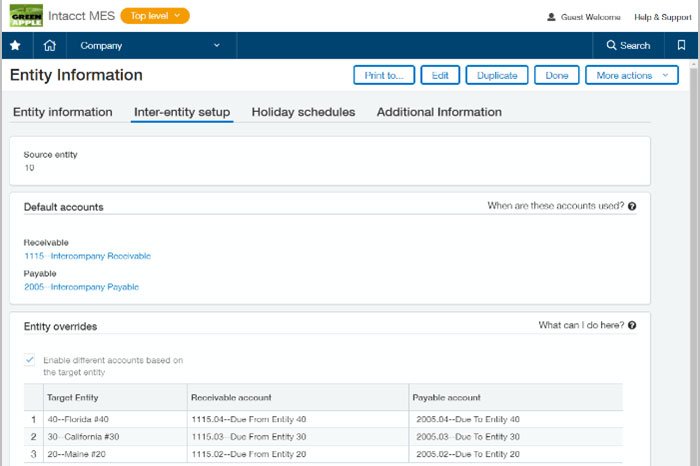Technology has transformed the way we work and interact with each other. Its effects have been profound across many industries, and construction is no exception. Early technology adopters have been utilizing artificial intelligence (AI), machine learning (ML), the internet of things (IoT), drones, 3D printing, and other technological advancements on the jobsite to build in ways we could previously only imagine.
However, while technology has opened up a world of possibilities for some, the industry as a whole has been slower to adopt new technologies. Many see the benefits, but with so many options available and so many competing priorities, execution can seem daunting. As contractors look to modernize their business and begin implementing new technologies, the cloud is a great place to begin. In this first installment of a four-part cloud series, I’ll provide some cloud basics, debunk some common cloud myths, and explore your options for moving to the cloud.
What is the Cloud?

Sage Intacct Construction operations dashboard. Image courtesy of Sage
The cloud refers to software and services that are stored and accessed over the internet instead of on your computer hard drive. Moving to cloud-based technologies eliminates the need for businesses to host their solutions on-premises via their own servers. Instead, your computer communicates with a network of cloud servers that are housed in data centers all over the world.
Storing your data in the cloud comes with a host of advantages, perhaps the most important being that it can be accessed from anywhere with an internet connection. Having this anytime, anywhere access is more important now than ever. It is essential for remote workforces and encourages greater efficiency and collaboration among project teams.
Debunking Common Cloud Myths
Many businesses are interested in moving their on-premises solutions to the cloud but are held back because of one or more mistaken beliefs about cloud technology. In gaining a better understanding of the cloud, it is important to take a look at some commonly held misconceptions. Let’s take a look at some of the most frequently touted myths about the cloud.
It’s Too Expensive
Cost is one of the most cited barriers for moving to the cloud, but in reality the cloud brings great value and cost savings. Businesses usually invest quite a bit upfront when setting up their on-premises solutions due to the high costs of managing servers and deploying expensive upgrades. The cloud removes the build and operate costs and allows companies to leverage the technology without the IT expense. Plus, you can benefit from a high return on investment and low total cost of ownership of cloud solutions.
It’s Not Secure
Business owners are often hyper-vigilant when it comes to data security, so it is not surprising that cybersecurity is a top concern when considering a move to the cloud. Some worry that their data could be at increased risk in the cloud. However, hyper-scale cloud providers can offer enterprise grade security, covering a business from all angles—physical, network, application, and data. Cloud providers deliver highly secured environments and work continuously to stop threats and upgrade protections so you can stop worrying about cyber threats and focus on running your business.
It’s Too Slow
Businesses often believe a cloud solution will be slower than an on-premises one, but this is simply not the case. Today’s remote data centers have scalable infrastructures and are connected by high-speed networks. Additionally, hyper-fast network connectivity makes cloud performance comparable to or even better than traditional in-house networks.
It’s Not Reliable
While some believe their on-premises network infrastructure is more reliable than a cloud solution, the truth is that they could be at risk of losing data if they’re not performing backups of their on-premises data correctly and on a regular basis. With an on-premises solution, businesses could also suffer from a major setback in the event of a natural disaster. Cloud options are more reliable as they automatically back up data and provide peace of mind in disaster recovery protocols, helping you keep your mission critical solutions up and running wherever and whenever they are needed.
Know Your Cloud Options

Photo courtesy of Sage
While most construction firms are already using the cloud in some aspects of their business (common examples include email, document sharing, and data storage), processes such as financial management are often outdated. Implementing an integrated cloud-based accounting solution can help you gain greater financial insight across your business. It can also help save a lot of time and energy by eliminating error-prone double data entry.
Some may already be convinced the cloud is the way to go but are unsure how to begin. When planning a move to the cloud it’s important to first understand your options, which include a self-hosted private cloud, third-party hosting, software as a service (SaaS), and add-ons and mobile applications. Let’s take a look at these options to help you determine which is best for you.
Self-Hosted Private Cloud
A private cloud option requires the most internal resources, so this may only be feasible for companies with an internal IT staff or trusted IT partner. In this option you would manage the move to the cloud on your own. All aspects—including updates, maintenance, security, and support—are managed by your internal IT staff. There is a high upfront investment to set up a private cloud, and you would also be responsible for costs associated with ongoing maintenance and upgrades.
Third-Party Hosting
A third-party hosting provider allows you to continue to use a solution that is intended to be deployed on-premises, while also experiencing many of the benefits of a cloud solution. The hosting provider would manage the technology, including updates, maintenance, security, and support. There would be an initial upfront investment for moving the solution to the cloud as well as monthly or annual fees for the hosting service.
Software as a Service (SaaS)/Native Cloud

Image courtesy of Sage
A native cloud SaaS solution provides the most modern and robust cloud option. All aspects of the technology—including updates, maintenance, security, and support—are included with a software subscription. This option minimizes the upfront investment necessary to adopt a new solution, as a business would only incur the monthly software subscription cost and any necessary costs for data migration and software implementation.
Add-ons and Mobile Apps
Some companies may not be in a position to completely overhaul their current accounting solution. If you find yourself in this position, you could consider add-on solutions and mobile apps that integrate with your current on-premises solution to provide remote work options. It is important for you to consider when you might be ready to change your back-end accounting solution and whether you could still use those tools with a new solution.
Conclusion
As you consider new technologies, it is important to understand your options and also to know what it is you need from your solution. Make a pros and cons list of your current solution along with a list of non-negotiables your new solution must have. Once you have clearly defined what you need, you can narrow down your list of options and have a solid starting point for finding the best cloud solution for your business.


